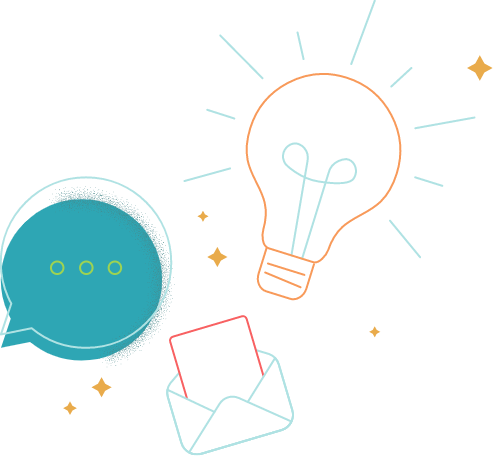“I, for one, welcome our new computer overlords.” Ken Jennings’ classic quip hits a little different in 2025, doesn’t it? Artificial intelligence is no longer a cartoonish hypothetical; it’s the new intern, the new analyst and the new co-pilot in every department. But before you can welcome your new overlords — or, more realistically, your new AI-powered assistants — you have to teach your team how to plug them in.
Our first instinct might be to look toward the technology itself when we’re looking for obstacles, but we’re actually pretty good at standing in our own way. A staggering 44% of executives admit that a lack of in-house expertise is what’s really pumping the brakes on AI adoption. The AI talent gap is widening into a chasm, and if you don’t build a bridge, your business is going to be left on the wrong side.
Mind you, having an AI strategy doesn’t mean agreeing on the number of ChatGPT licenses your business needs and calling it a day. Uncomfortable as it may be, a strategy means you need to dig deep to the core of your business mission and identity, rewiring your teams’ skills, mindset and processes. Here’s how to do it right.
Stop Training for Tools, Start Training for Thinking
When discussing your upskilling strategy, it might be tempting to schedule a dozen workshops on how to use the latest AI writing tool or data analysis platform. Don’t. While tool-specific knowledge has its place, it’s a short-term fix for a long-term revolution. The AI landscape is shifting so fast that today’s hot new app is tomorrow’s legacy software.
Instead, you need to future-proof your workforce by focusing on AI-agnostic competencies — the durable, transferable meta-skills that will remain valuable no matter how the technology evolves.
Prioritize these four pillars:
1. Critical thinking: AI is a phenomenal producer, but a terrible editor. It can generate a 1,000-word article in seconds, but it can’t tell you if the argument is sound, the tone is right or if it hallucinated a key statistic. Your team needs the critical reasoning skills to evaluate, question and refine AI outputs, separating the digital gold from the sophisticated gibberish. That can translate to your technical staff coding in guardrails for generated copy, teaching your marketing staff to be discerning editors or showing them to look beyond AI hype when choosing a marketing platform.
2. Systems, not apps: No AI tool is an island. To get real value, AI must be woven into your existing workflows, data pipelines and tech stack. Systems thinking is the ability to see the whole board — to understand how integrating an AI sales assistant will impact your CRM data, your marketing automation sequences and your customer service protocols. Without it, you’ll just be creating more silos, not busting them.
3. Ethical reasoning: AI doesn’t have a moral compass. It operates on the data it’s given, biases and all. Your team must be the ethical gatekeeper. This involves training them to identify potential biases in AI models, understand the compliance and privacy implications of using proprietary data, and make responsible decisions about how and when to deploy AI. Don’t think of this as your company’s legal duty alone. Every team member’s actions are scaled once an AI system is in place, so you better be sure everyone’s aligned on your organization’s ethical standards before they click “Generate.”
4. Adaptability: The only constant in the age of AI is change. The most important skill of all is the ability to learn, unlearn and relearn. You have a choice to make. You can let the 41% of workers who fear AI might render their job duties obsolete stop you in your tracks; or you can show your staff that they have to constantly adapt anyway, and that they’ll never be obsolete. Once everyone understands you’re encouraging experiments, questions and suggestions, AI skepticism can quickly flip to enthusiasm.
Build an Adaptive Learning System, Not a Static Training Program
The old model of one-size-fits-all training is dead. In its place, forward-thinking organizations are building AI-powered competency frameworks that are as dynamic as the technology itself.
This is the concept of dynamic skills mapping.
Imagine a system that continuously and automatically assesses your team’s current skills. It doesn’t just look at their job titles; it analyzes the actual work they do. Based on your strategic business objectives — entering a new market, launching a new product line — the system then predicts the skills your team will need in six, 12 or 18 months.
From there, it creates personalized, adaptive learning pathways for each employee and hiring strategies. A marketing manager might get a curated curriculum on using AI for predictive analytics, while a content creator gets a deep dive into ethical AI-assisted research.
It might sound like science fiction or too much effort, but it’s the only path that’ll allow you to use technology to solve the AI skills gap. Such a system moves beyond the static, check-the-box training module and creates a living, breathing learning ecosystem that evolves in real-time with both your employees’ progress and your organization’s needs.
Redefine ROI: Measure What Matters, Not Just What’s Easy
If you can’t measure it, you can’t manage it. Yet a shocking 64% of executives are still trying to figure out what skills they even need, let alone how to measure the return on their AI investments.
Most ROI frameworks for AI are fundamentally broken because they fixate on easily quantifiable (but often misleading) metrics. They miss the intangible benefits that often represent the greatest value. It’s time for a more comprehensive, three-tiered approach to measuring AI ROI.
Tier 1: Tangible Metrics (The Table Stakes)
These are the numbers your CFO loves to see. They’re important, but they’re only part of the story.
- Time saved: How many hours are your teams saving on specific tasks?
- Cost savings: What are the direct reductions in operational or resource costs?
- Error reduction: What is the quantifiable decrease in errors in processes like data entry or quality control?
Tier 2: Intangible Metrics (The Human Factor)
This is where the real magic of AI happens — augmenting your team’s potential.
- Employee confidence: Are your people more confident in their ability to tackle complex challenges?
- Decision-making speed: Is your team able to make better, faster decisions because they have better data?
- Innovation capacity: Is the time saved by AI being reinvested into creative, high-value work that was previously impossible?
Tier 3: Predictive Metrics (The Future-Proofing Score)
These metrics tell you if your upskilling efforts are preparing you for tomorrow’s challenges.
- Skills gap closure rate: How quickly are you closing the gap between the skills you have and the skills you need?
- Adaptation velocity: How quickly can your team adopt and find value in a new AI tool?
- Competitive positioning: Are your AI capabilities translating into a stronger position in the market?
By adopting this holistic framework, you move beyond simple cost-benefit analysis and start measuring the true transformative impact of AI on your organization.
Foster Psychological Safety: The Secret Ingredient to AI Adoption
All the training and measurement in the world will fail if your team is afraid. Remember those 41%? If almost half of your workers are worried that AI will make their jobs obsolete, you’re dealing with a silent killer of innovation. You can’t afford an environment where people are scared of being judged for using AI, or scared of being replaced by it. Either one means they simply won’t experiment. They won’t innovate. They won’t engage.
In other words: Building a culture of psychological safety is non-negotiable. Here are three key factors in accomplishing that:
- Lead with augmentation, not automation: Frame AI as a tool that enhances human capability, not one that replaces it. Focus on use cases where AI acts as a co-pilot, freeing up employees from tedious, repetitive tasks to focus on strategy, creativity and complex problem-solving.
- Create an AI brain trust: Don’t let AI strategy happen behind closed doors. Form a cross-functional AI team or council. This group, made up of people from different departments and levels, can seek out and evaluate new tools, identify powerful use cases and champion the AI-first mindset. It makes AI a shared initiative, not a top-down mandate.
- Encourage and legitimize use: Help your team overcome their hesitation. Acknowledge the awkward learning curve. Celebrate the small wins and the interesting failures. When a manager openly shares how an AI tool helped them build a better presentation, it sends a powerful signal to their team that it’s OK to try. Soften the judgment people might pass on colleagues who are early adopters.
Your First Steps to an AI-Ready Team
This can feel overwhelming, I know. But you don’t have to boil the ocean — or engineer a blockchain-validated smart ocean brewing system that monitors water temperature via distributed sensor networks. Start here:
- Audit your tools and people: Find out what AI tools have already infiltrated your organization. Who is using them? How do they feel about them? Where are they getting stuck? This qualitative data is just as important as the quantitative.
- Identify quick wins: Find a low-risk, high-impact area to pilot a more structured AI upskilling initiative. This could be helping your content team use AI for research and brainstorming, implementing agentic AI for a routine warehouse task or equipping your data analysts with predictive modeling tools.
- Document everything: Create clear, accessible documentation and guidance. Don’t stop at the first “how-to” guide for a specific tool. You need to plan your organization’s philosophy on AI — your ethical guardrails, your data governance policies and your vision for an AI-augmented workforce.
The transition to an AI-powered future won’t be seamless, but it’s not optional. The companies that will win in the next decade are the ones that are investing in their people today and understand how to implement guardrails reflecting their values and company mission and culture.
By focusing on durable skills over transient tools, measuring what truly matters, and building a culture of safety and experimentation, you can turn the anxiety of the AI revolution into your greatest competitive advantage.






